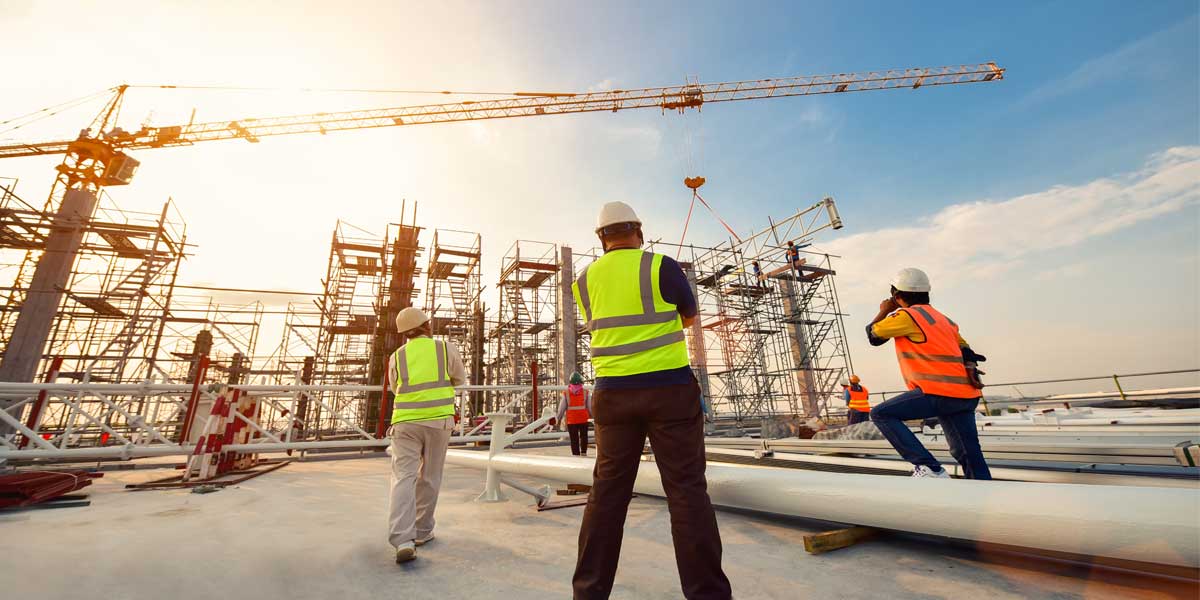

The world is in the throes of the fourth industrial revolution, driven by the convergence of the physical and digital worlds(machine learning, robotics, artificial intelligence or AI, etc). While India still has to cover significant ground compared to the developed world, technology is now fundamentally changing the way its citizens live and work. In India, the construction industry is an important indicator of the state of the economy as it is one of the largest employment generators in the country, after agriculture and retail. With strong linkages to industries such as cement, steel, chemicals, paints, tiles, etc, the sector serves as one of the strongest propellers of private-sector involvement in the country’sbuilt environment. India recorded about $ 25.7 billion of cumulative FDI inflows between April 2000 and March 2020 in construction development—about 5 per cent of total FDI inflows.
Today, new technologies in construction are being developed. And what seemed like future tech years ago—connected equipment and tools, telematics, mobile apps, autonomous heavy equipment, drones, robots, augmented reality (AR) and virtual reality (VR), and 3D printed buildings—is now being deployed across jobsites. It is also expected that there will be wider use of technology in construction and construction management, especially after the COVID-19 pandemic.
Indeed, technology in the construction space has coincided with growing demand for faster construction and world-class quality.Here are some trends that we foresee playing a pivotal role:
With the use of BIM, developers can incorporate digital representations of buildings in 3D models to facilitate better collaboration among all stakeholders on a project. This can lead to better design and construction of buildings. Tunnel framework makes use of steel fabricated forms to cast beams, walls and columns in one go. As steel formwork can be used repetitively, it lowers labour costs and saves time as the walls and slabs do not need finishing work, thereby improving construction efficiency. In addition to this, by implementing prefabricated technologies, developers can avail benefits such as site safety, waste reduction, improved air quality and quality management.
With VR, workers could get exposure to environments such as confined spaces or working at a height in a safe, controlled environment. VR simulators have been used for years to train soldiers, pilots, and surgeons and could be used in the same way to train workers on everything from operating cranes and excavators to welding and masonry work. AR is another technology that can greatly improve safety on the construction site. Whether it’s allowing for a more detailed safety plan to be developed or providing training on heavy equipment using actual equipment on real sites with augmented hazards, there are several ways that AR can be deployed on the jobsite. In addition, companies are also relying on bricklaying robots or rebar tying robots. Once set up, these robots can work continuously to complete tasks faster than human workers without needing to take breaks or go home.
Sensors mounted across the construction site can alert workers immediately when they are at risk after permissible exposure levels are reached. Sensors can be deployed to monitor aspects like temperature, noise levels, dust particulates and volatile organic compounds (VOCs). Data from the sensors is collected and can be analysed to mitigate exposure levels and keep workers safe while staying compliant with OSHA regulations.
Considering the vast potential of the construction industry, companies are looking at focusing on implementing digitalisation, innovative technologies and new techniques to improve productivity and efficiency. Techniques like BIM, jump formwork and Mivan, among those listed above, are likely to take us into the future and streamline project management, thereby enhancing the quality and safety of projects. With digitisation taking hold, companies across the spectrum will have to make concentrated efforts to get on board and upskill themselves.
About the Author:Gurjot Bhatia is Managing Director, Project Management, India, Middle East and North Africa, CBRE.